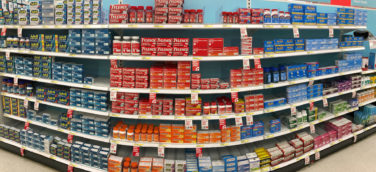Publishers, marketers and agencies are all buzzing about native advertising. While many are stuck debating the semantics of native ads, only a handful (34% of agencies, and even fewer healthcare marketers) have put native into practice.
Despite the significant opportunity for pharmaceutical brands to benefit from a native content approach, the healthcare industry, in particular, remains largely hesitant to adopt the medium. Due to the complex regulatory environment and shrinking marketing budgets, many pharmaceuticals are resistant to advertising solutions that they consider to be controversial and unproven.
Why devote precious marketing dollars to native ads? Because they are effective. According to a study conducted by IPG Media Lab, consumers look at native ads 53% more frequently than banner ads. As a result of their integration with editorial, native ads register a 9% lift in brand affinity and an 18% leap in purchase intent compared to traditional ads.
By combining an ad with strategically developed editorial, the two can complement each other to provide a deeper, more valuable experience for an audience. The advertising-editorial fusion also lends credibility that the ad may not have otherwise had. As a result, users are more inclined to pay closer attention and engage on a higher level.
Before taking the plunge, however, marketers must assess their advertising needs, and consider several factors in order to use native ads to their maximum effect:
1. Adhere to regulatory guidelines: This almost goes without saying, but marketing teams need to be well-versed in regulations. The FDA has not provided clear guidance on native advertising, so the best course of action is to apply existing brand promotional guidelines to any native activations. Ensure that all communications—both the ad and editorial—are clear and do not contain any misleading information.
2. Pick the right partner: Learn the nuances between the different content publishers, and determine which fit logically with your brand. Research audience demographics so that you can reach your target audience, but also consider how well your brand gels with the publisher’s brand. For instance, WebMD might be a perfect partner for a new-to-market OTC heartburn treatment, but might not be the best option for a specialized medical device. Choose a content partner that speaks to your brand and its audience.
3. Determine the scope of your investment: Will you initiate your brand’s native strategy with a short-term, one-off effort—a single sponsored piece—or is your brand ready to enter into a full-scale content partnership with a publisher? Determining how significant an investment you want to dedicate to native advertising is of paramount importance. Content partnerships are typically the most effective in terms of ROI, but brands must be willing to devote a significant portion of their marketing budget to support a long-term partnership.
4. Choose the right content: Associate your brand with content that will enhance the audience’s perception of your brand. For instance, if you’re marketing a vitamin, consider pairing it with similar content about healthy eating and living. The editorial and ad content should be similar in tone, style and messaging in a comprehensive effort to engage the reader.
5. Decide who will develop the editorial: Some publishers are willing to develop tailored content to match the advertiser’s needs as part of the partnership, while other marketers opt to create their own content. As an example, Tysabri entered into an unbranded 10-part video series partnership with Healthline. Tysabri took the initiative to develop content comprised of first-person patient stories that provide motivation and support for readers living with multiple sclerosis. If interested, target consumers could then easily click on the companion banner that leads to more specific information about the brand.
6. Determine how you’ll measure success: Still in its relative infancy, native advertising is notoriously difficult to measure. The current standard of measurement is click-throughs and pageviews on the publisher’s site, a very “upper funnel” way of assessing success. However, advertisers are always on the hunt for more accurate methods of tracking the consumer journey, so we expect more precise evaluations of success in the near future. We recommend that brands work closely with the publisher to define clear goals before entering into a partnership.
We recommend that all healthcare brands consider adding native to their marketing program. Marketers that take early advantage of this powerful advertising opportunity will see considerable results: Boosts in brand affinity, response rates and purchasing intent are only the tip of the iceberg. Ultimately, native offers marketers a less intrusive advertising medium that also provides significant value for the reader. Brands that don’t adopt a native strategy may be left stranded without a paddle.





